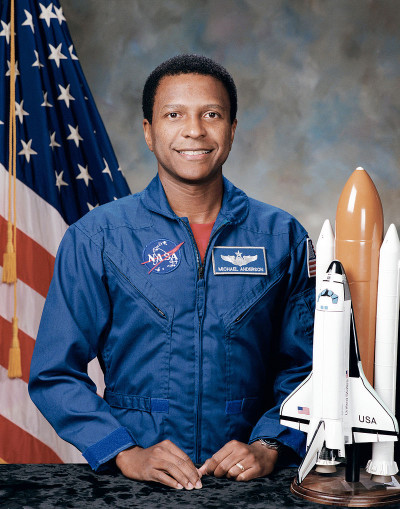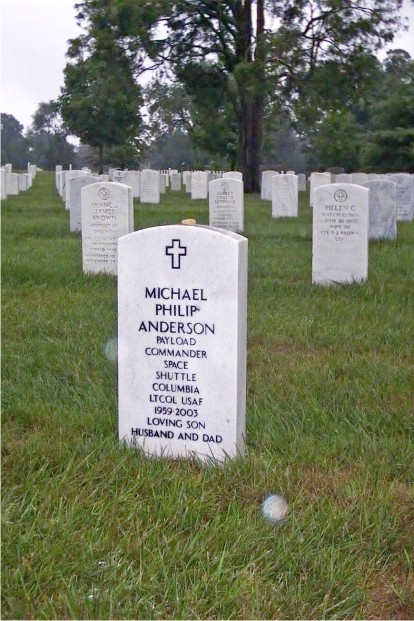Michael Anderson (Michael Phillip Anderson)

Michael Anderson graduated from the University of Washington in 1981 and was commissioned a Second Lieutenant in the U.S. Air Force. After completing a year of technical training at Keesler Air Force Base, Mississippi, he was assigned to Randolph Air Force Base, Texas. At Randolph he served as Chief of Communication Maintenance for the 2015th Communication Squadron and later as Director of Information System Maintenance for the 1920th Information System Group. In 1986 he was selected to attend Undergraduate Pilot Training at Vance Air Force Base, Oklahoma. Upon graduation he was assigned to the 2d Airborne Command and Control Squadron, Offutt Air Force Base, Nebraska as an EC-135 pilot, flying the Strategic Air Command’s airborne command post code-named “Looking Glass.” While stationed at Offutt, he completed his master’s degree in physics at Creighton University in 1990.From January 1991 to September 1992 he served as an aircraft commander and instructor pilot in the 920th Air Refueling Squadron, Wurtsmith Air Force Base, Michigan.
From September 1992 to February 1995 Michael Anderson was assigned as an instructor pilot and tactics officer in the 380th Air Refueling Wing, Plattsburgh Air Force Base, New York. Michael Anderson logged over 3,000 hours of flight in various models of the KC-135 and the T-38A aircraft. Selected by NASA in December 1994, Anderson reported to the Johnson Space Center in March 1995. He completed a year of training and evaluation, and was qualified for flight crew assignment as a mission specialist. Anderson was initially assigned technical duties in the Flight Support Branch of the Astronaut Office. Michael Anderson flew on missions STS-89 and STS-107, logging over 593 hours in space. STS-89 Space Shuttle Endeavour (January 22–31, 1998), was the eighth Shuttle-Mir docking mission during which the crew transferred more than 9,000 pounds of scientific equipment, logistical hardware and water from the Space Shuttle to Mir. In the fifth and last exchange of a U.S. astronaut, STS-89 delivered Andy Thomas to Mir and returned with David Wolf. Mission duration was 8 days, 19 hours and 47 seconds, traveling 3.6 million miles in 138 orbits of the Earth.
STS-107 Columbia (January 16 to February 1, 2003). The 16-day flight was a dedicated science and research mission. Working 24 hours a day, in two alternating shifts, the crew successfully conducted approximately 80 experiments. However as the space shuttle began to launch, suspicions arose that the shuttle’s wing was seriously damaged by a foaming failure. Despite the suspicions NASA mistakenly said that the damages was only a small scrape to the wing; damage that would not have been threatening to the shuttle. The STS-107 mission ended on February 1, 2003 when the Space Shuttle Columbia disintegrated as it was attempting to re-enter the atmosphere. Damage to the shuttle sustained during liftoff allowed hot re-entry gases to enter the left wing, dooming the orbiter. Anderson perished during the break-up and his body was discovered in a rural farm-field in Texas. The mission duration was 15 days, 22 hours and 20 minutes. A NASA investigation found that the damage to the wing from the foaming failure was responsible for the fate of the shuttle and crew. NASA took full responsibility for the mistake and publicly apologized, making changes to their program.
Born
- December, 25, 1959
- USA
- Pittsburgh, New York
Died
- February, 01, 2003
- USA
- Texas
Cemetery
- Arlington National Cemetery
- Arlington, Virginia
- USA



